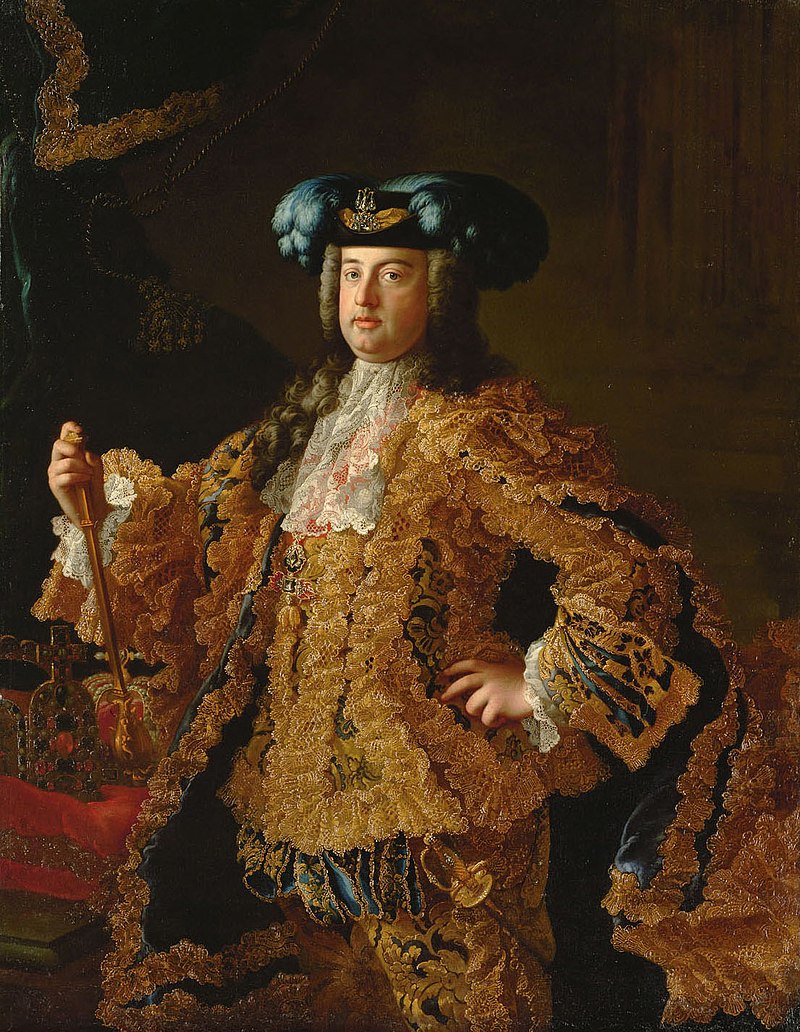
Franz I. (of Lorraine) was German-Roman emperor from 1745 to 1765. István Ferenc of Lorraine was born on December 8, 1708 in Nancy. His father was Duke Leopold I of Lorraine, who served as the reigning Duke of Lorraine and Bar. His mother was Princess Elizabeth Sarolta of Orléans, who was born in the XV. Cousin of King Louis. Between 1729 and 1737 he served as the reigning Duke of Lorraine and Bar III. Under the name Ferenc. From 1737 he ruled as the Grand Duke of Tuscany II. From 1745 until his death, in 1765, he was the emperor of the German-Roman Empire under the name Franz I. Stephen Franz István of Lorraine, Grand Duke of Tuscany, married the Austrian Archduchess Maria Theresia, later Hungarian and Czech, in a ceremonial setting in Vienna on February 12, 1736. queen. Unlike the usual dynastic marriages of convenience, this was a real love marriage. From their marriage, 16 children were born, with whom the House of Habsburg-Lorraine was established. Among his children is II. German-Roman Emperor József and Queen Marie Antoinette of France. He died on August 18, 1765 in Innsbruck. His resting place is in the Imperial Crypt in Vienna. Francis II is the son of the German-Roman Emperor. He was succeeded by Emperor József, who inherited both the Hungarian and Czech royal titles after the death of Mária Theresa (from 1780). I. During the reign of Francis, the Habsburg Empire underwent significant political and cultural development.
Emperor Francis I (of Lorraine) ruled the German-Roman Empire from 1745 to 1765. During his reign, the coinage remained in the hands of the Viennese court, and the imperial mint operated in Vienna. The coinage of Emperor Francis did not bring significant changes compared to the previous practice. The main currency was still the piece of gold, the ducat, but the emperor also minted many smaller coins. Among the silver coins, the most frequently minted coin was the thaler, but 1/2, 1/4, 1/8 and 1/16 thalers were also minted. Among the copper coins, the krajcár was the most frequently minted coin, but 1/2 and 1/4 krajcárs were also minted. The coinage of Emperor Francis also has value from an artistic point of view. Imperial coins were characterized by beautifully elaborated depictions, and the minting technology also developed. The ducats of Emperor Francis show the portrait of the emperor and the imperial coat of arms. The weight of the ducats is 3.5 grams, and their pure gold content is 986.67%. The emperor's thalers show the portrait of the emperor and the imperial coat of arms. The thalers weigh 28.066 grams, and their pure silver content is 889.00%. The imperial coat of arms is visible on the Krajcárs. Several versions of the krajczars are known, of which the most frequently minted version weighs 2.49 grams and has a pure copper content of 960.00%. The coinage of Emperor Francis played an important role in the financial system of the German-Roman Empire. Imperial coinage spread widely throughout the empire and contributed to economic development.
Numismatics. Online store for old money, coins and banknotes.